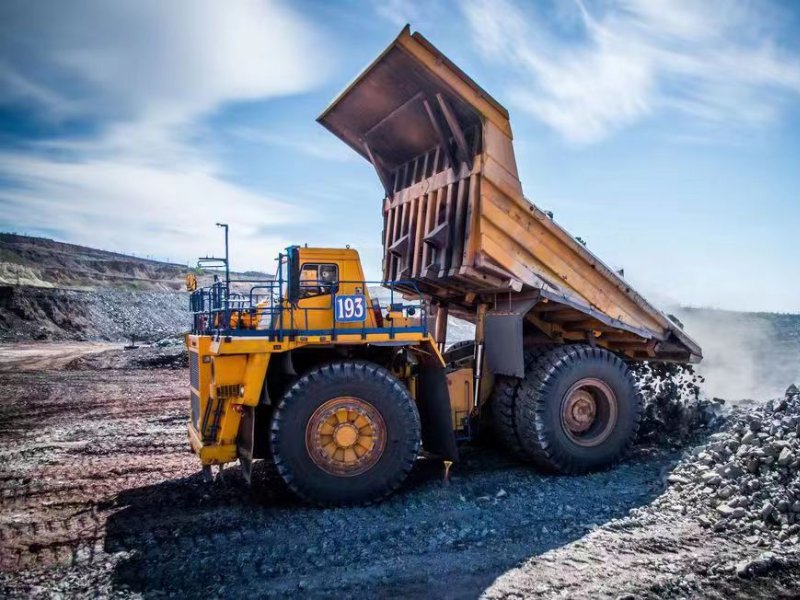
Generally using carbon pulp or carbon filter method. Gold and silver are recovered with activated carbon dissolved in cyanide. Before filtering, the ore is crushed and screened. After screening, the mineral is put into the ball mill to add water and lime. Flocculant is added to each concentrator to promote rapid settling of solids, and the bottom flow is filtered through a series of filtration tanks. This gives the gold and silver enough time to dissolve in the cyanide. Pulp through a series of carbon adsorption tank, gold and silver from the solution is extracted, in the pulp flow on the opposite side, input activated carbon gold and silver attached to the carbon particle is extracted. By the time the pulp reaches the final absorption tank, most of the gold and silver have been extracted. The remaining pulp is poured into the settling tank, while the carbon particles arrive at the first absorption tank, where they have absorbed most of the gold and silver in the solution. The gold and silver-rich carbon particles are transported to an elute, where the gold and silver are washed off the carbon particles with super-hot water, and the solution containing the gold and silver is recovered by condensating through an electrolytic cell.
bauxite
First, the minerals are crushed to a level less than 1mm. Add concentrated sodium hydroxide and apply high temperature and pressure. Aluminum dissolves in highly corrosive liquids, and impurities except soluble sodium aluminate are not dissolved. After the above process, the gravel is removed along with the pulp which has been deposited through primary concentration. Flocculant was added to the primary concentrator. This is a very important process to clarify the overflow. The bottom flow of the concentrator, the red mud, will be treated by a reverse reflux sedimentation process. In this process, aluminum in the liquid is recovered through a series of washing sinks. The flocculant is then used again to promote rapid settlement and to obtain the required clarification overflow. The aluminum-rich primary concentrator overflow is filtered, cooled (48 hours) and then filled with aluminum hydrate to promote aluminum trihydrate precipitation. After filtration, washing and calcination, aluminum is obtained.
Copper mines
The copper-bearing material can be separated from the waste material or gangue by crushing and the mineral is crushed again and then further crushed with a ball mill or agitating mill. The resulting mineral size is usually less than 100um. During the final crushing process, a collector is added to the pulp. This collector can adsorb copper sulfide and make its particles hydrophobic. The copper ore will be concentrated and recovered by flotation process. Air will be passed into the pulp in flotation. Foaming agent will also be added to create bubbles and to attach copper particles firmly to the bubbles at the top of the pulp. Pulp or tailings from the flotation cell will enter the concentrator for further settlement. Flocculants are added to facilitate rapid settlement and clarification overflow. Clarify that the overflow will be used as recycled water. The remaining concentrated tailings will be driven into the centrifuge for centrifugal dehydration, at which time the flocculant will be added as the centrifugal additive. The bubble (concentrate) loaded with copper ore is mechanically separated from the overflow. It is then condensed and dehydrated. Flocculants are used to improve the efficiency of sedimentation and filtration. The resulting concentrate, or cake, contains nearly 25 to 35 percent copper.
phosphate ore
The main beneficiation methods of mineral processing are as follows: direct flotation, reverse flotation, reverse - positive(positive - reverse) flotation, double reverse flotation, scrub desslime, roasting digestion process, chemical dressing, heavy medium separation and so on. In the process of phosphate rock production, a large amount of slime, waste rock and waste water are produced, which will pollute the water and soil around the mine. If no corresponding measures are taken, the ecological balance will be destroyed and local production and life will be affected. The waste water in phosphate mining industry mainly comes from the external drainage of mines and open-pit stopes, the waste water of dressing plant, the water for machine repair and auto repair, and the living water. Our company can take different measures to treat mine wastewater according to its source and nature to make it meet the discharge standard. In the process of wastewater treatment, various kinds of polymers produced by the same force chemical industry can be selected. Using these polymers can accelerate the treatment speed of wastewater and improve the recycling rate of wastewater. The treatment of slime uses our company`s flocculant, flocculant can make the fine particles more compact, liquid solid separation. It can greatly reduce the dosage of flocculant, make the tail mud settle quickly, and dehydrate effectively, so that the solid content of the tail mud is more than 60%, so that it can be transported to the quarry for pit filling, vegetation, farming, greening, and improve the utilization rate of land.